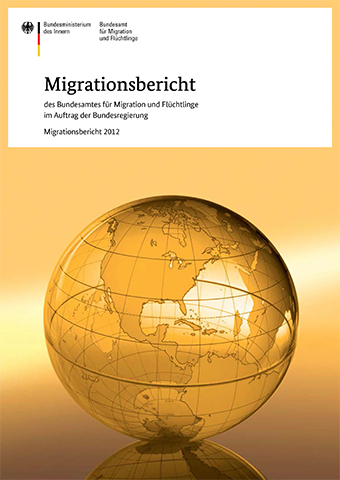Migration Report 2012 ,

On 15 January 2014, the Federal Cabinet adopted the Migration Report 2012, which was drafted by the Federal Office for Migration and Refugees. On the basis of the available data, the Report provides an overview of migration-related events in Germany. It contains a detailed presentation of the various types of migration and provides information on the structure of the population with a migration background.
The main conclusions
- Germany continues to increase in popularity as a destination country for migrants.
- Immigration increased by 13 percent on a year-on-year basis in 2012, whilst the number of people emigrating rose by 7 percent.
- Migration within the EU accounts for 58 percent of all migration to Germany.
- Germany has a positive migration balance of 369,000 persons, this being the highest since 1995.
- There was a further increase in the number of highly-skilled workers coming to Germany.
- Furthermore, more young people than ever before who had acquired their entitlement to study abroad started studying in Germany.
- Immigrants’ main country of origin was Poland, as in the previous years.
- The number of new arrivals from Romania and Bulgaria has continued to increase since these countries acceded to the EU in 2007.
- The number of new arrivals from the Southern European EU Member States Spain, Italy and Greece also increased markedly.
- The year-on-year increase in the number of asylum-seekers continued, with a 41 percent increase being observed.
- One German resident in five has a migration background. This share is as high as roughly one in three among children aged under ten.
The Federal Government's Migration Report is drawn up on an annual basis on behalf of the German Bundestag.
This report is only available in German language.

